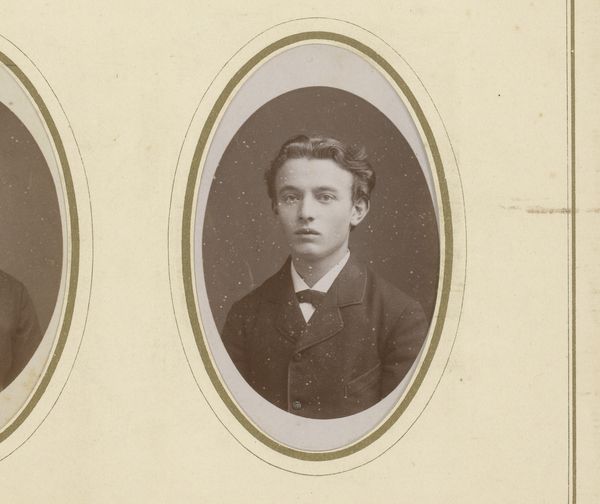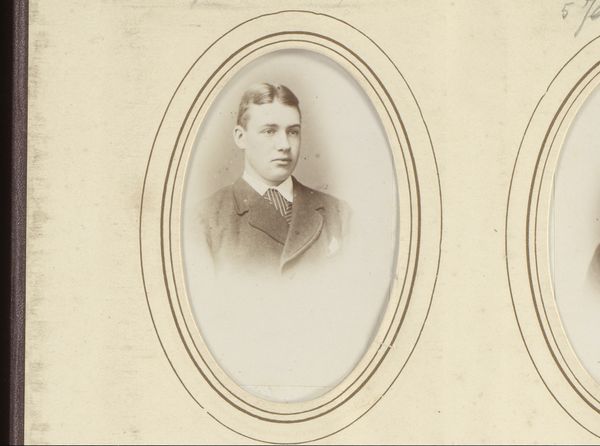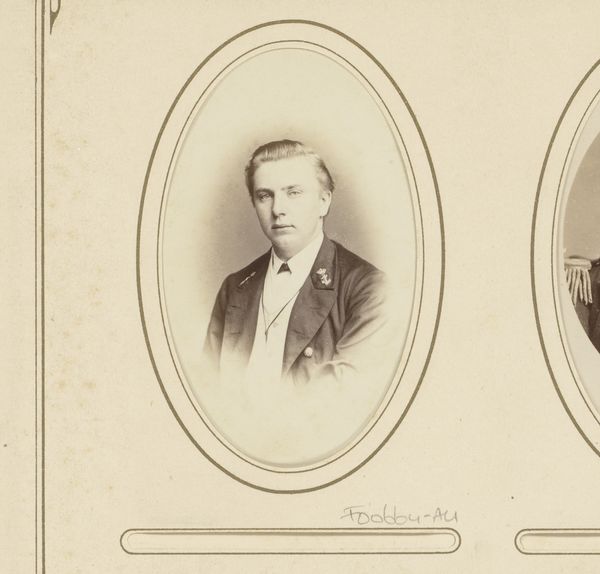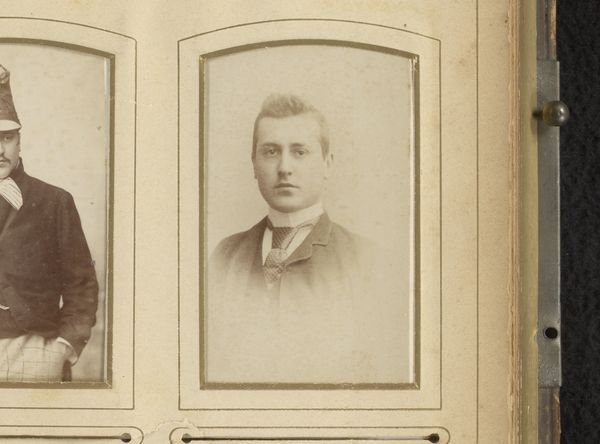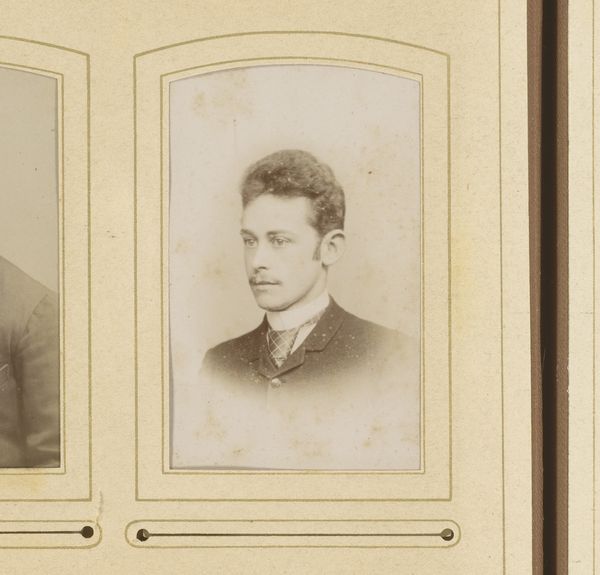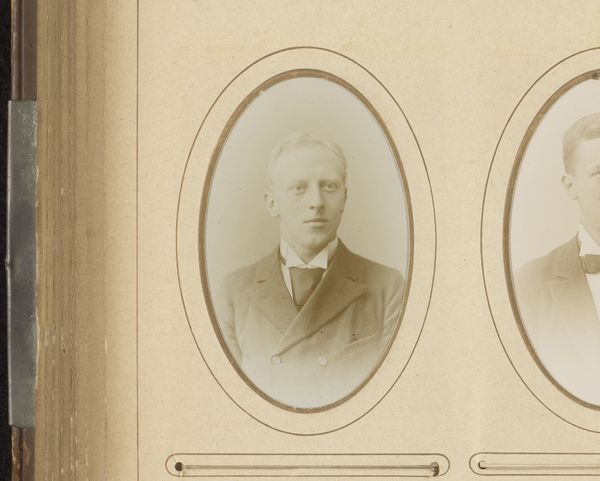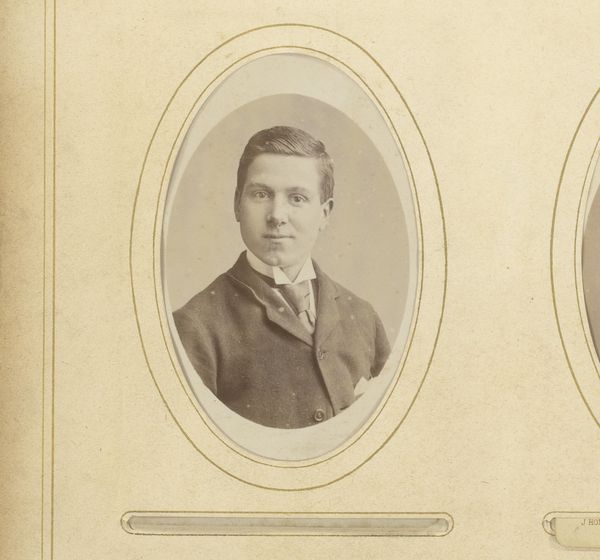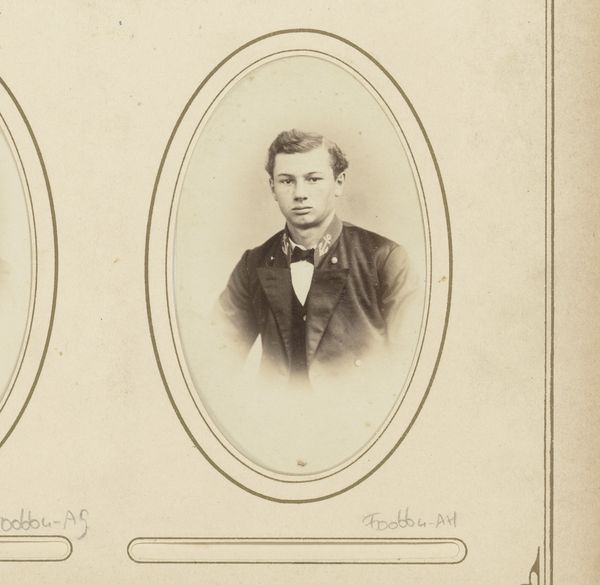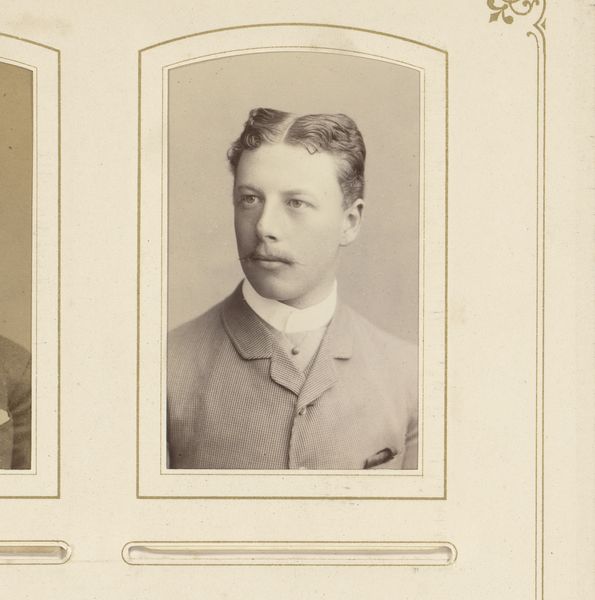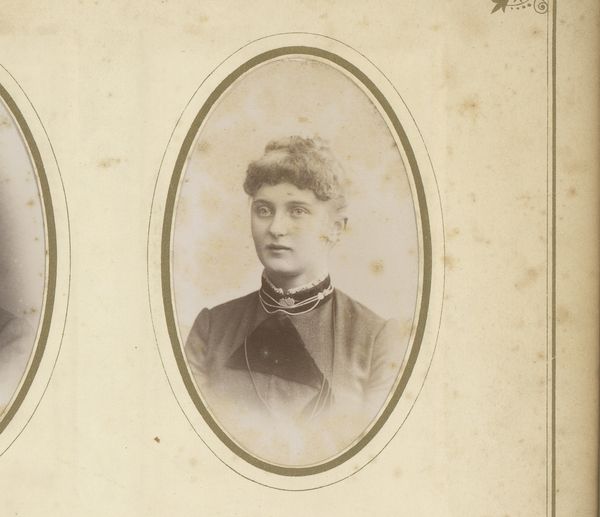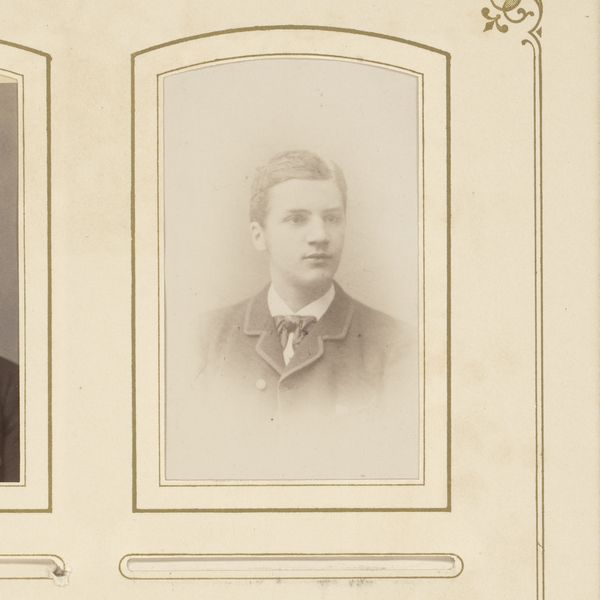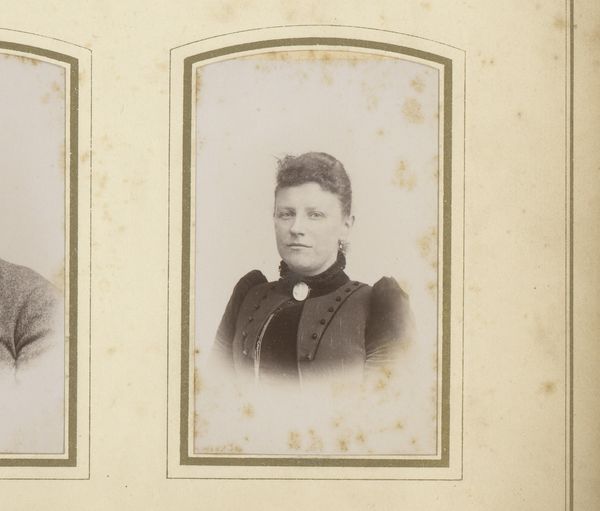
#
aged paper
#
vintage
#
photo restoration
#
archive photography
#
film poster
#
historical photography
#
old-timey
#
yellow element
#
19th century
#
golden font
Dimensions: height 87 mm, width 53 mm
Copyright: Rijks Museum: Open Domain
Curator: It has this hauntingly delicate feeling, don’t you think? There's such fragility about it—like it might just crumble to dust if you breathe on it wrong. Editor: This is a photographic portrait, around 1882, simply titled “Portret van een staande jonge man,” or Portrait of a Standing Young Man in English, by J.J.D. van Geuns. It certainly speaks to the long history and tradition of portraiture through the relatively new technology of photography at the time. Curator: It’s more than just the subject staring back—it’s time itself looking out. The young man’s pose and that almost smug little expression...He looks confident in a way, almost aristocratic. Editor: I’d argue it speaks volumes about representation and class. Who was this young man, what afforded him the opportunity to sit, formally dressed, for this photograph? The emerging middle classes were keen to adopt these forms. What performative elements are on display here, signaling not just individuality but the aspiring identities of a changing Dutch society? The very existence of this artifact prompts many more questions about status and privilege. Curator: Right, privilege and class, absolutely. But isn't it also intimate? He’s making eye contact, in a way daring us to look at him all these years later. Do you think that’s why we look so closely? To feel a kind of... connection with the past. I like to make up his history. I imagine all sorts of possibilities. Maybe that says more about me than the boy. Editor: Definitely. The selective construction of collective memory is fascinating. The photograph becomes a mirror, really. We're seeing aspects of ourselves, our values, and projecting desires onto the image of that “young man.” What responsibility do we, as contemporary viewers, have in interpreting that? Who does this imagined past actually serve? Curator: Maybe we see what we need to see. Like any good poem, it means something a little different to each viewer and speaks differently at each moment in history. That photograph exists suspended in time but fully realized when engaged with each unique pair of eyes, even one hundred years later. Editor: That interplay of historical context and individual perspective shapes our understanding. Art, at its best, demands that we critically interrogate the forces that constructed our own perspectives.
Comments
No comments
Be the first to comment and join the conversation on the ultimate creative platform.
